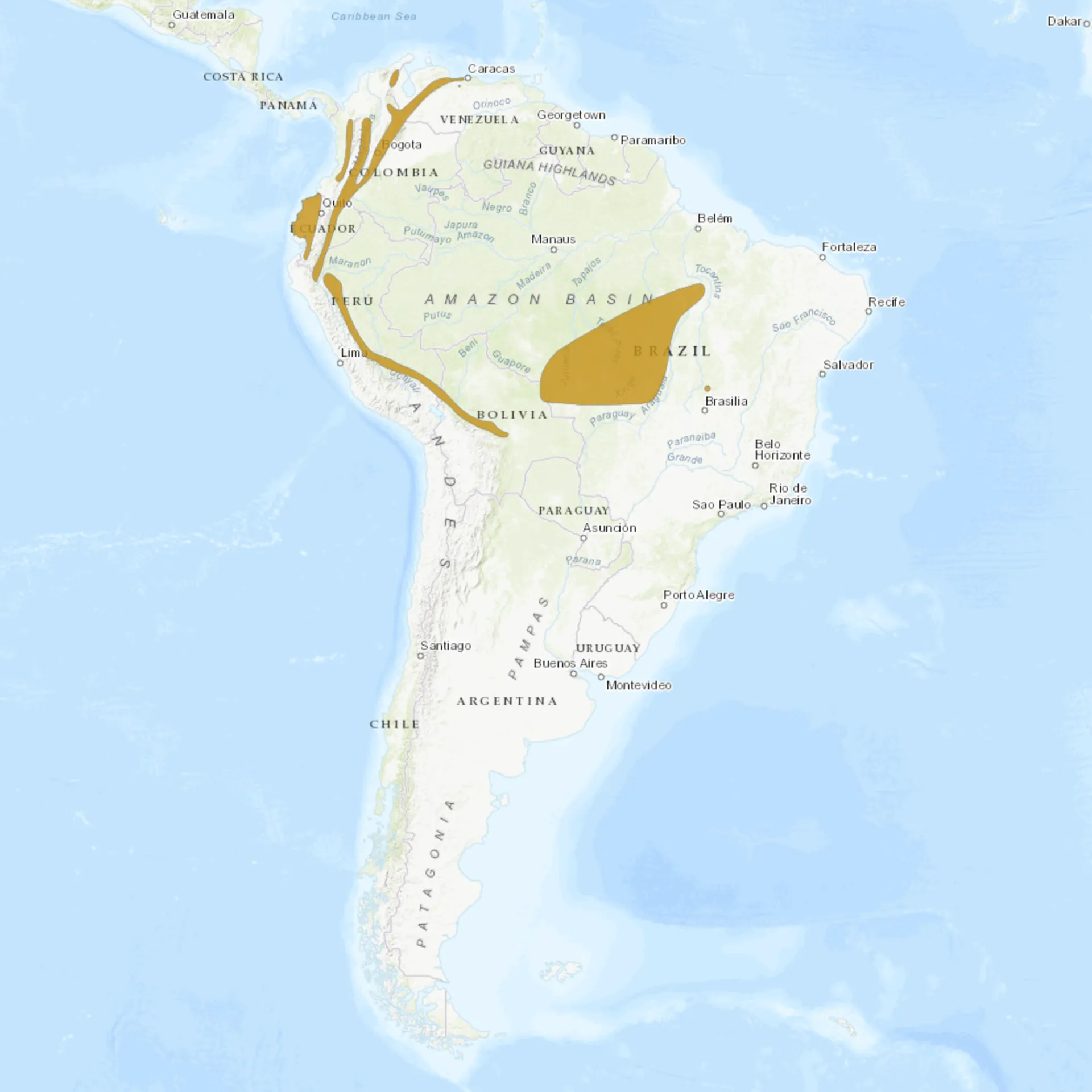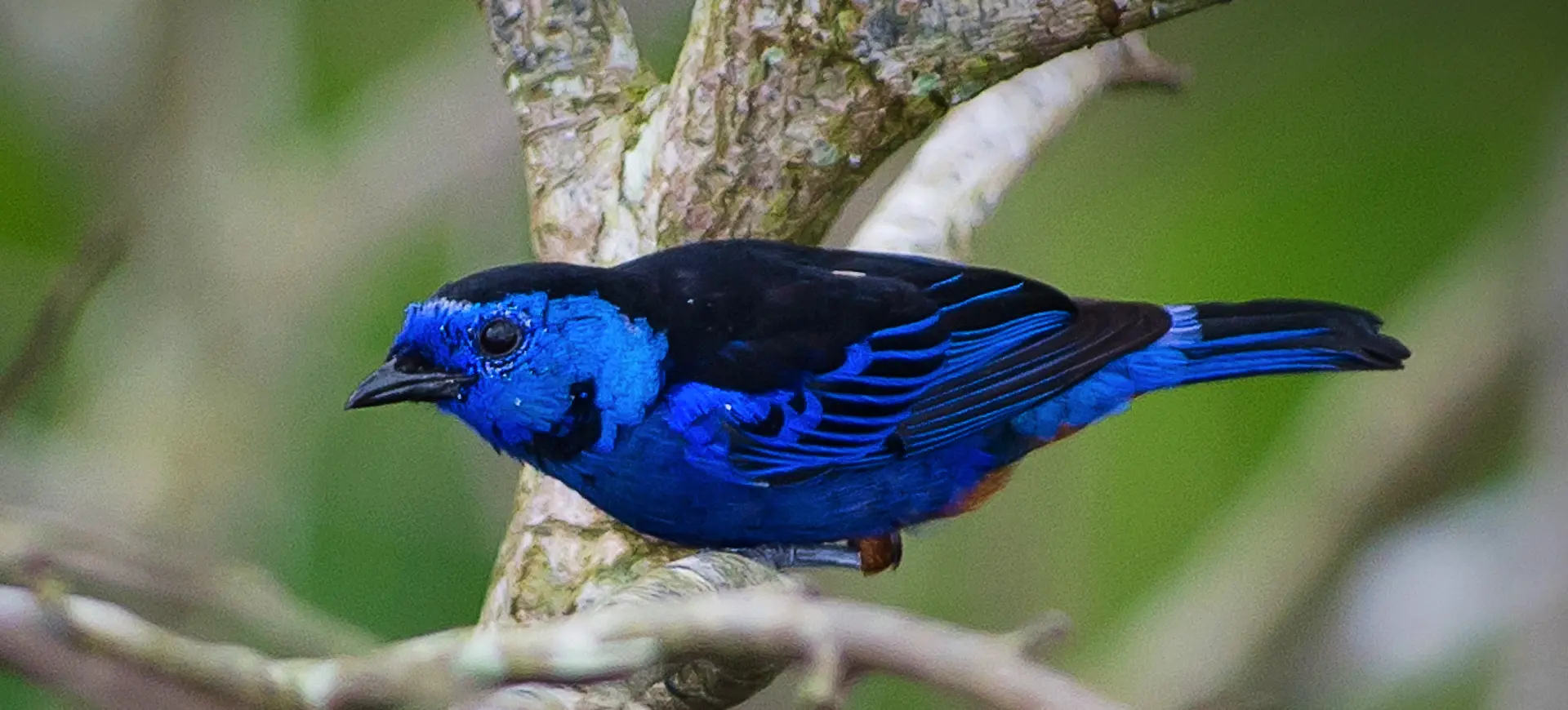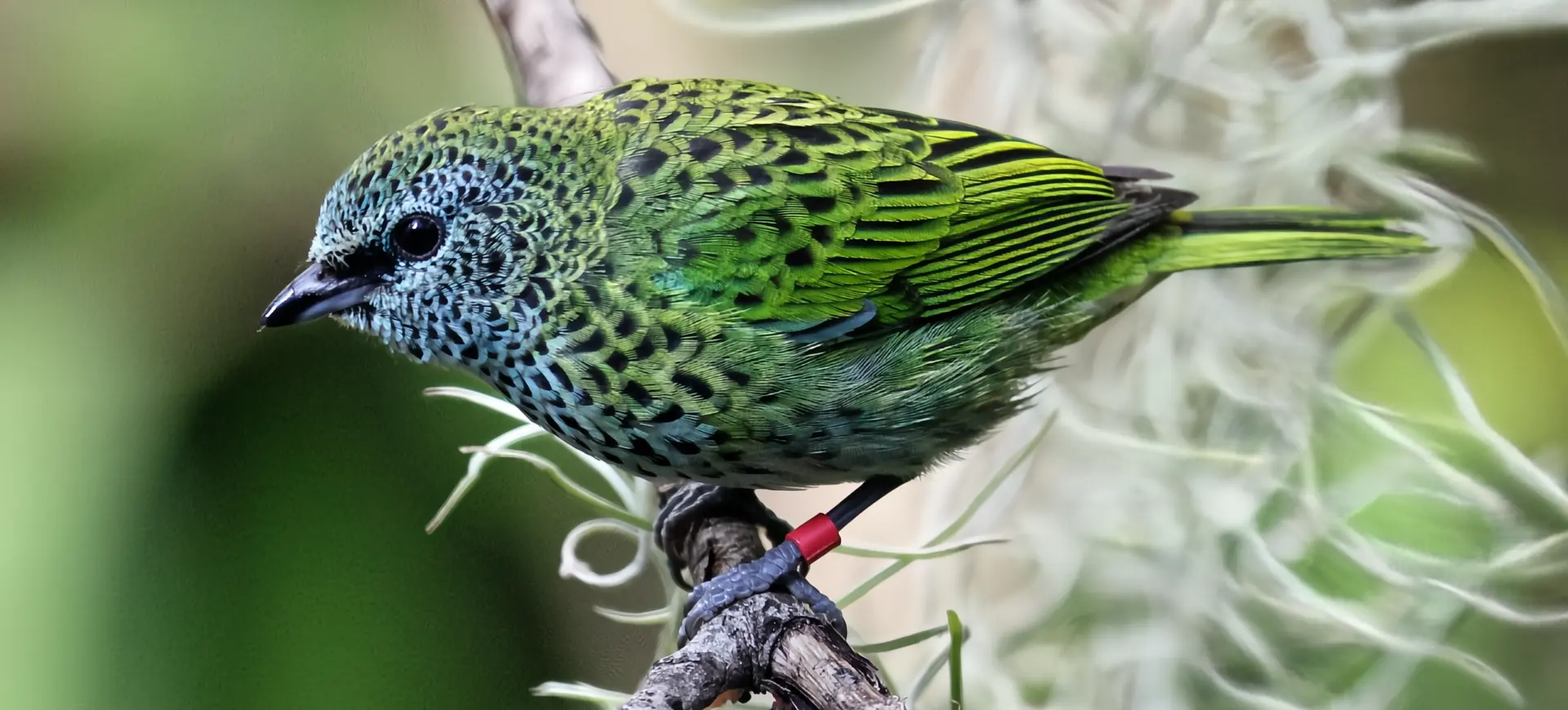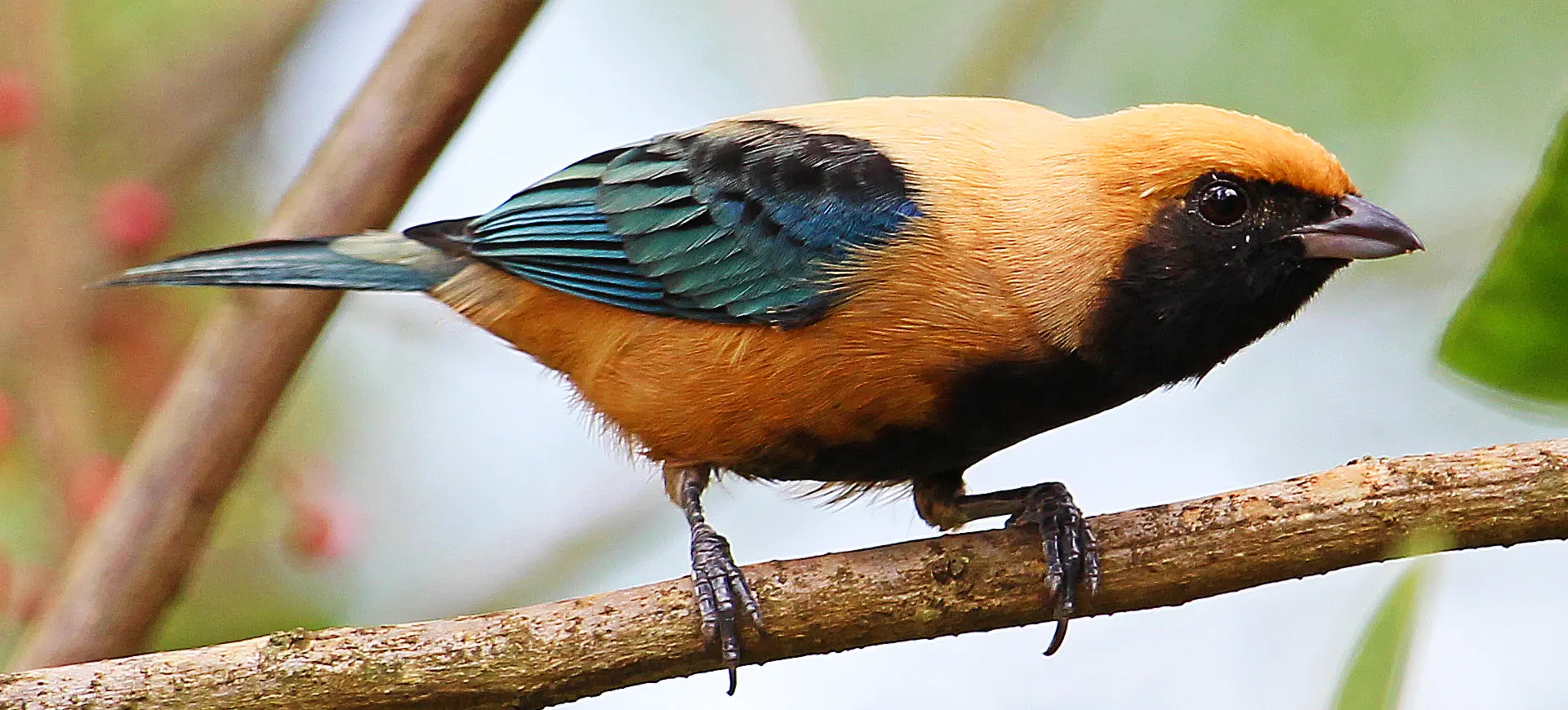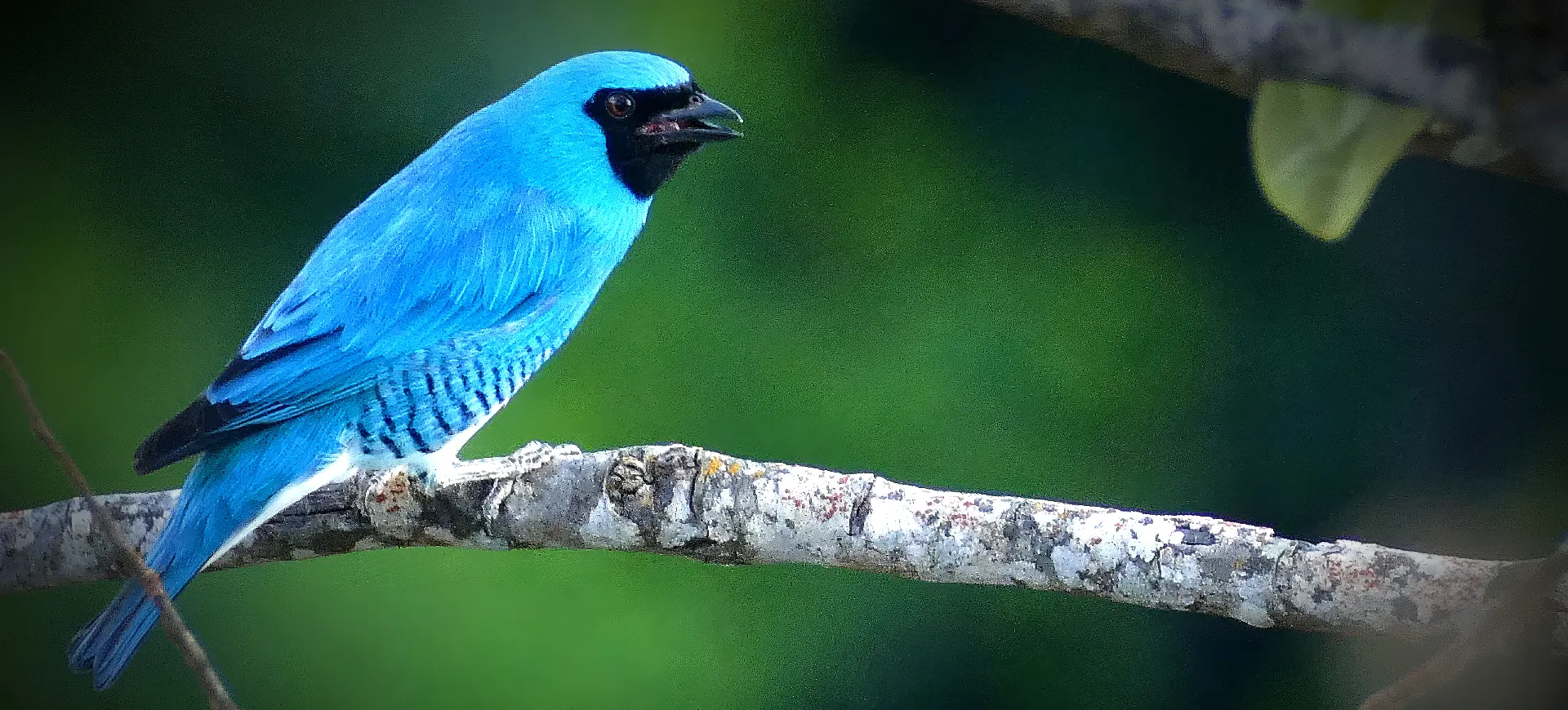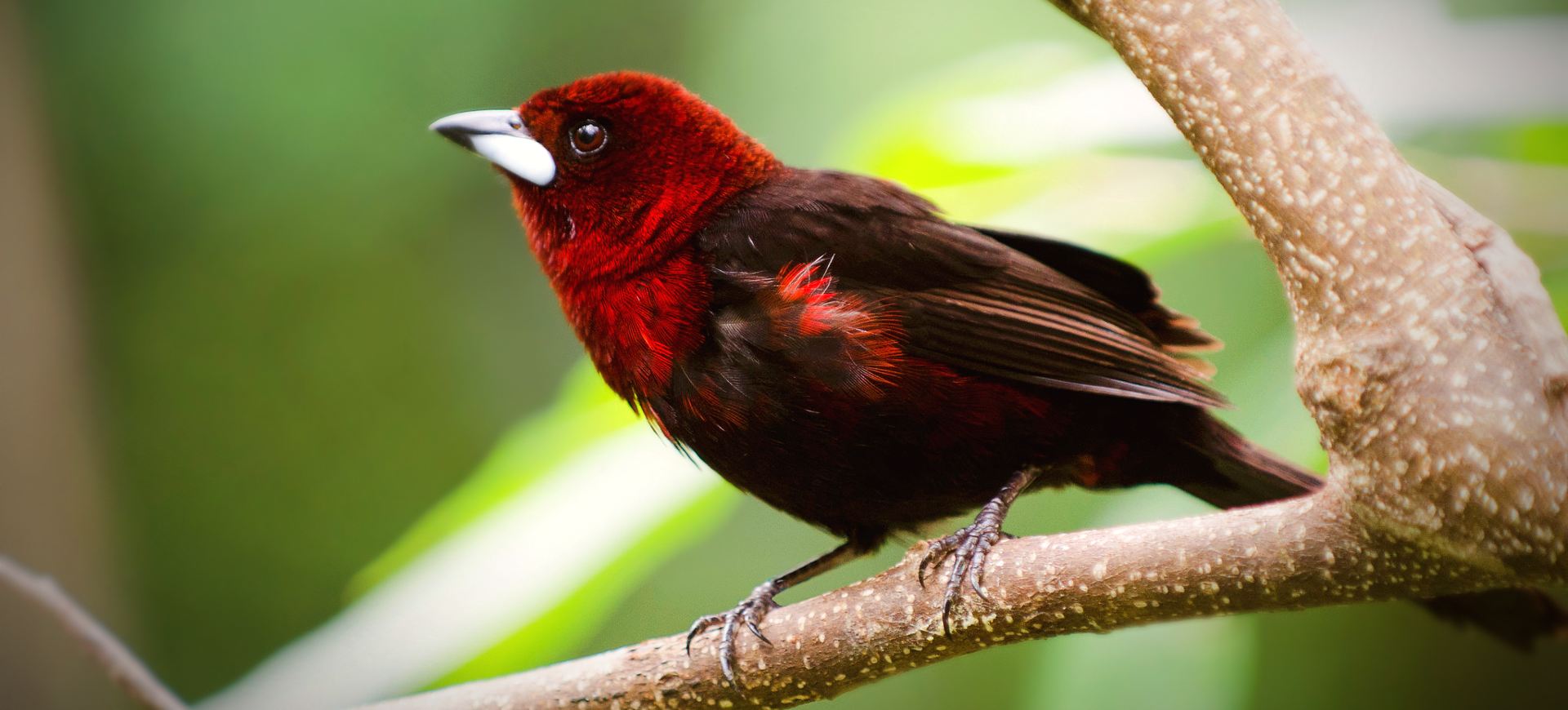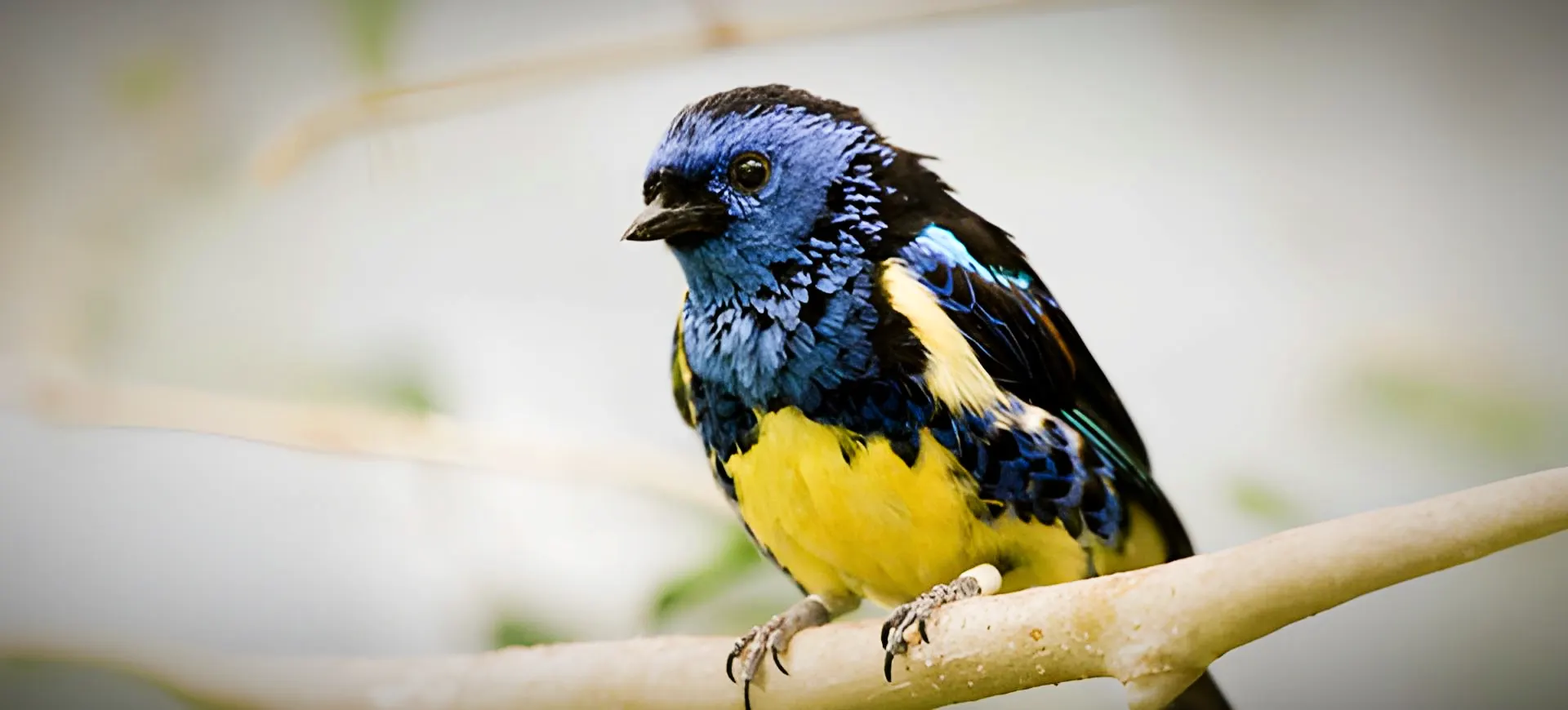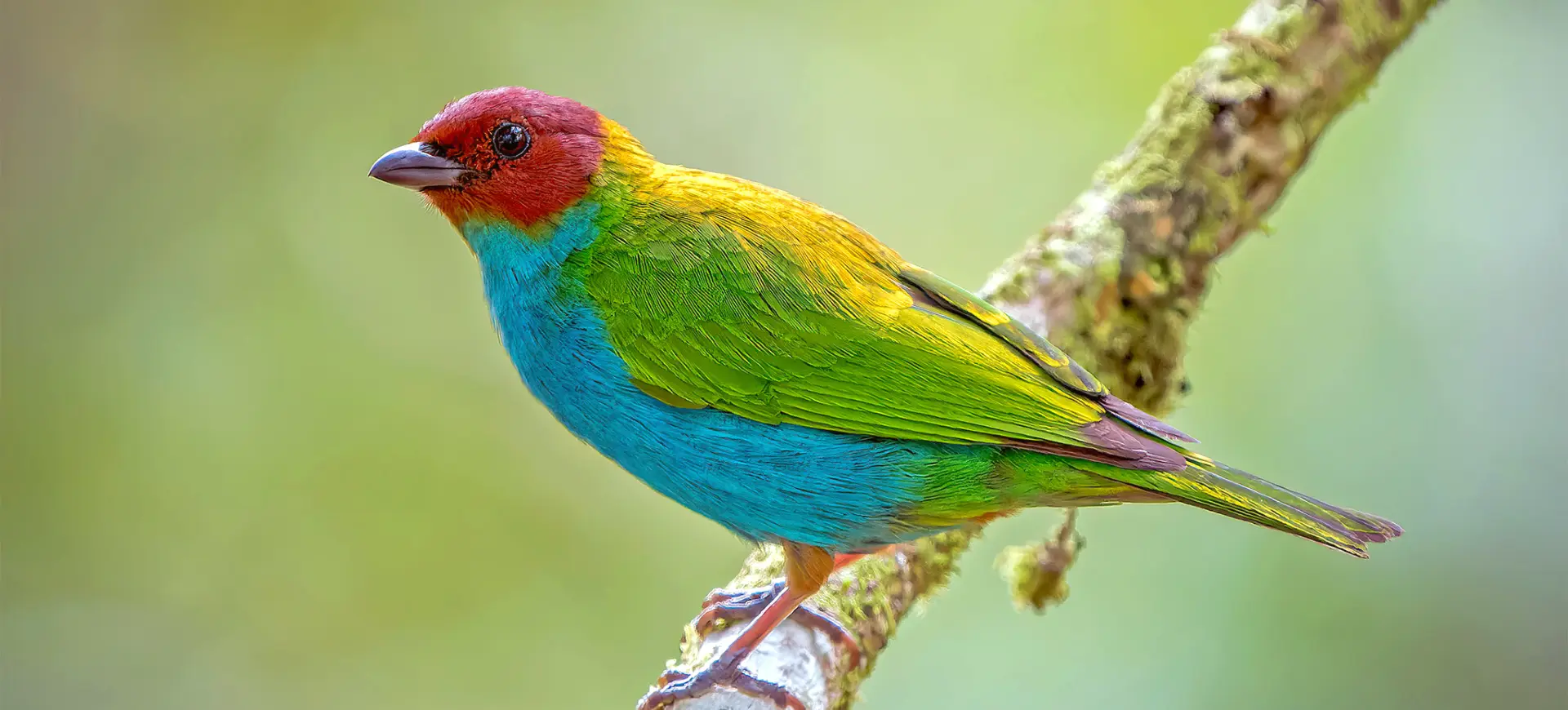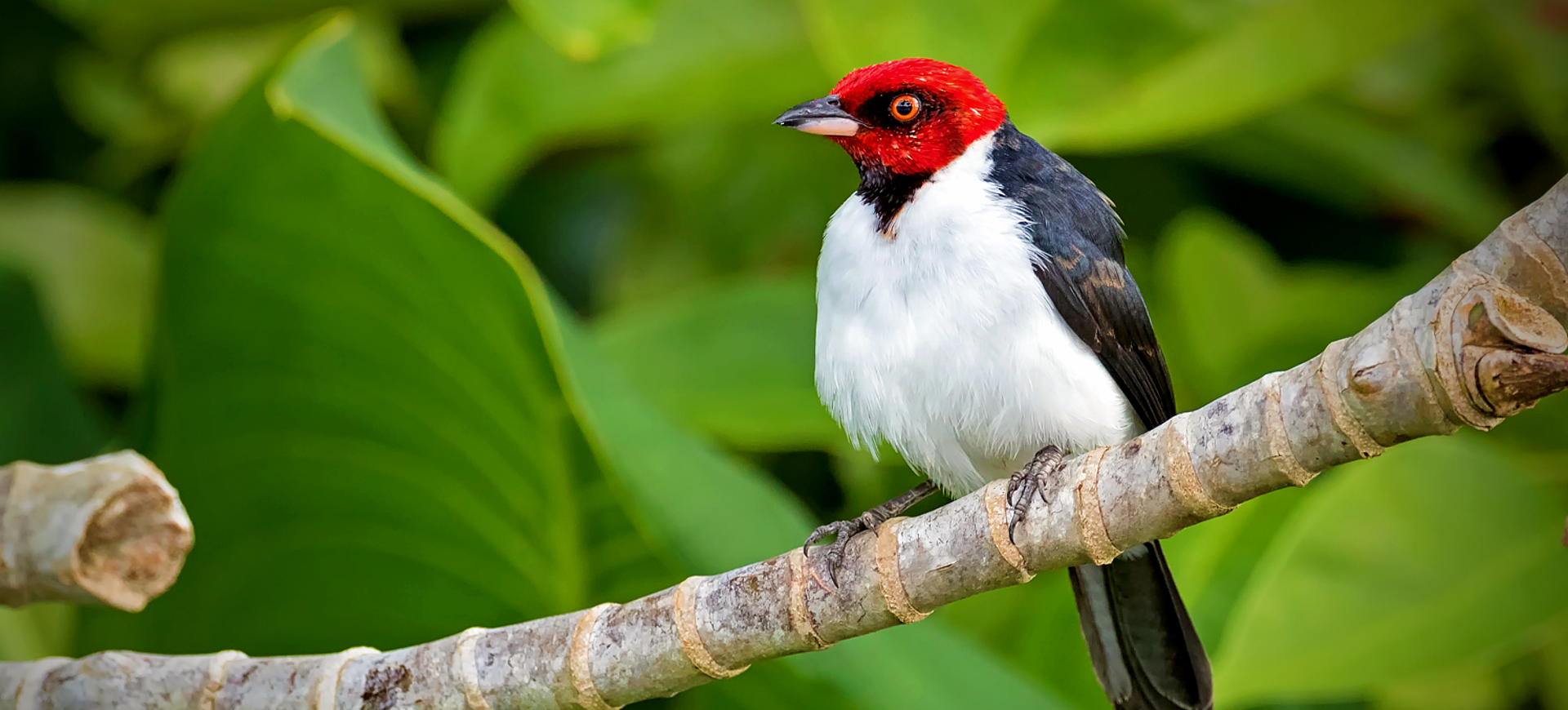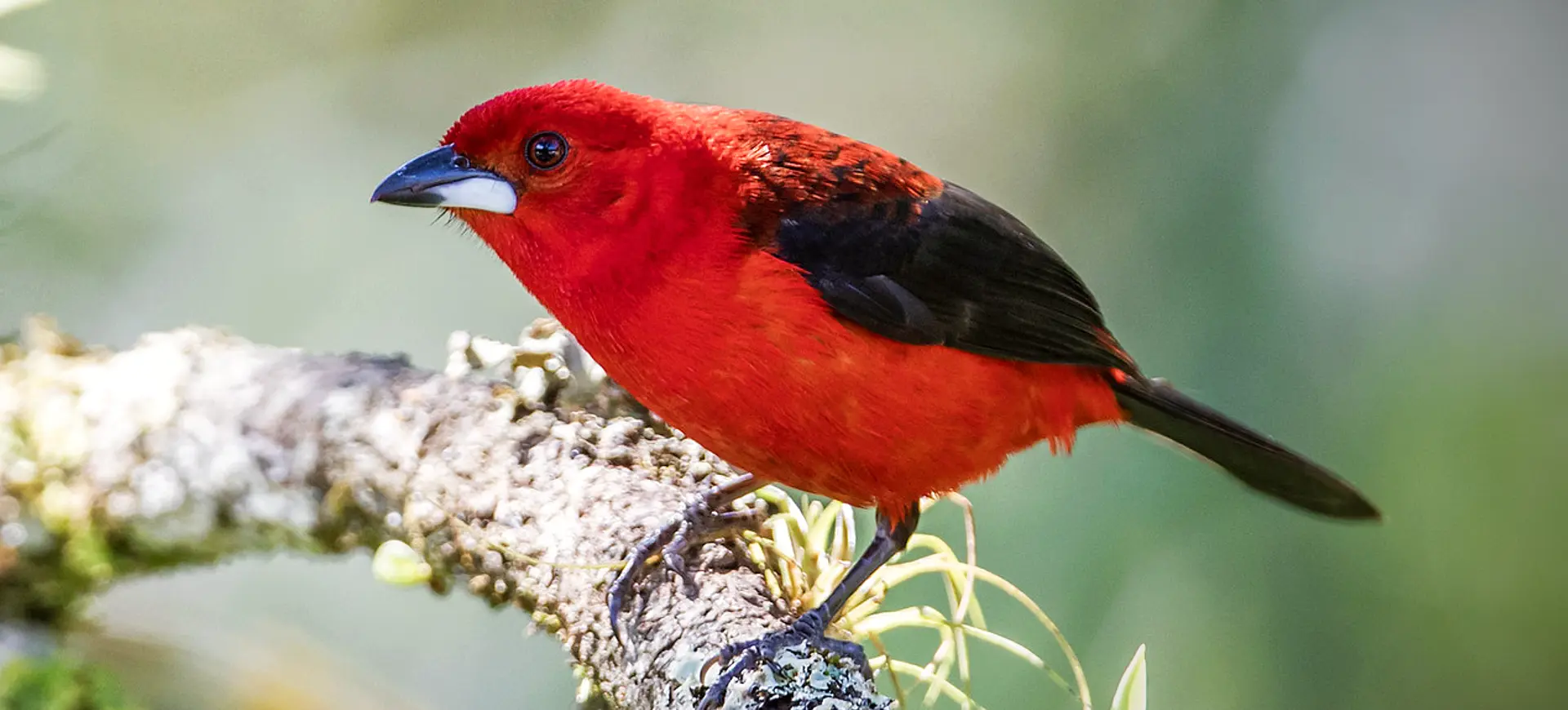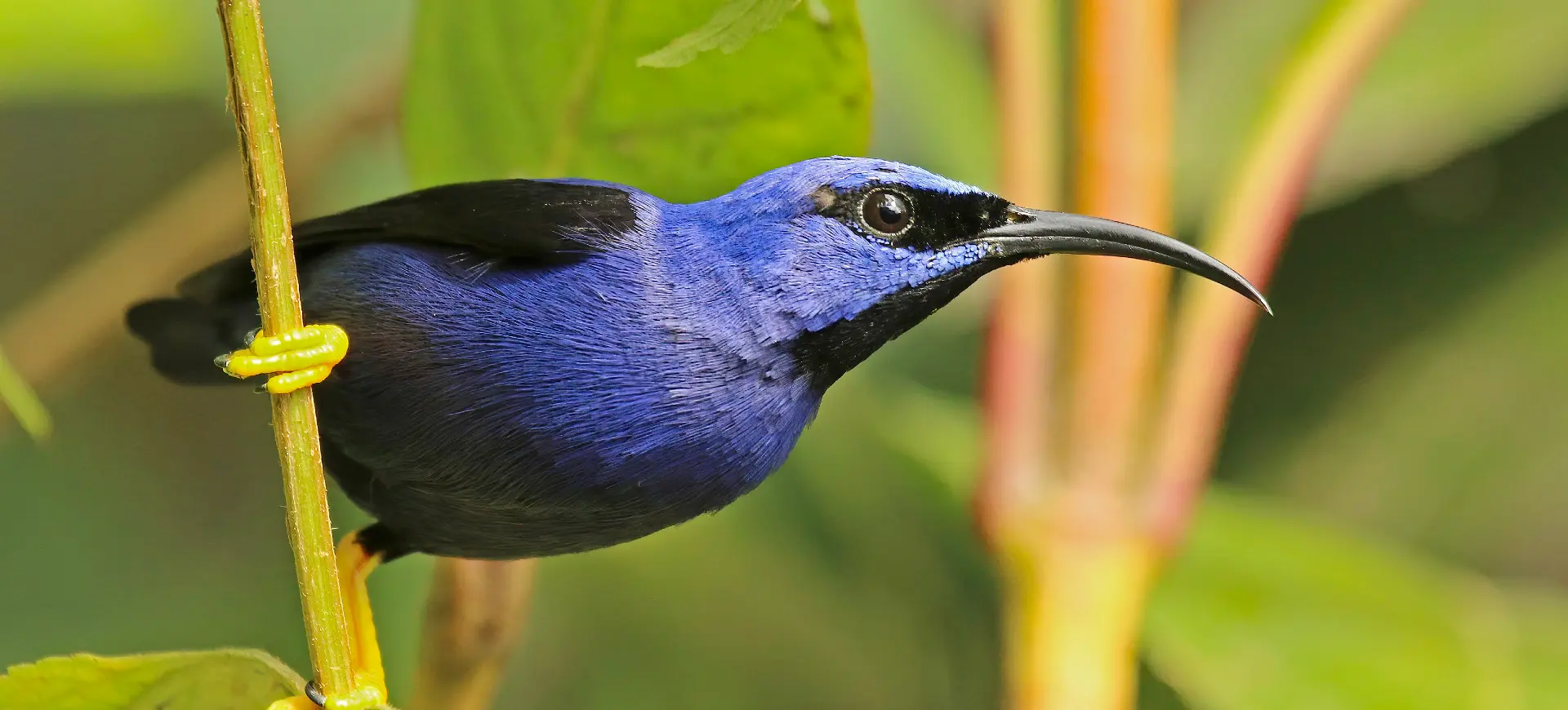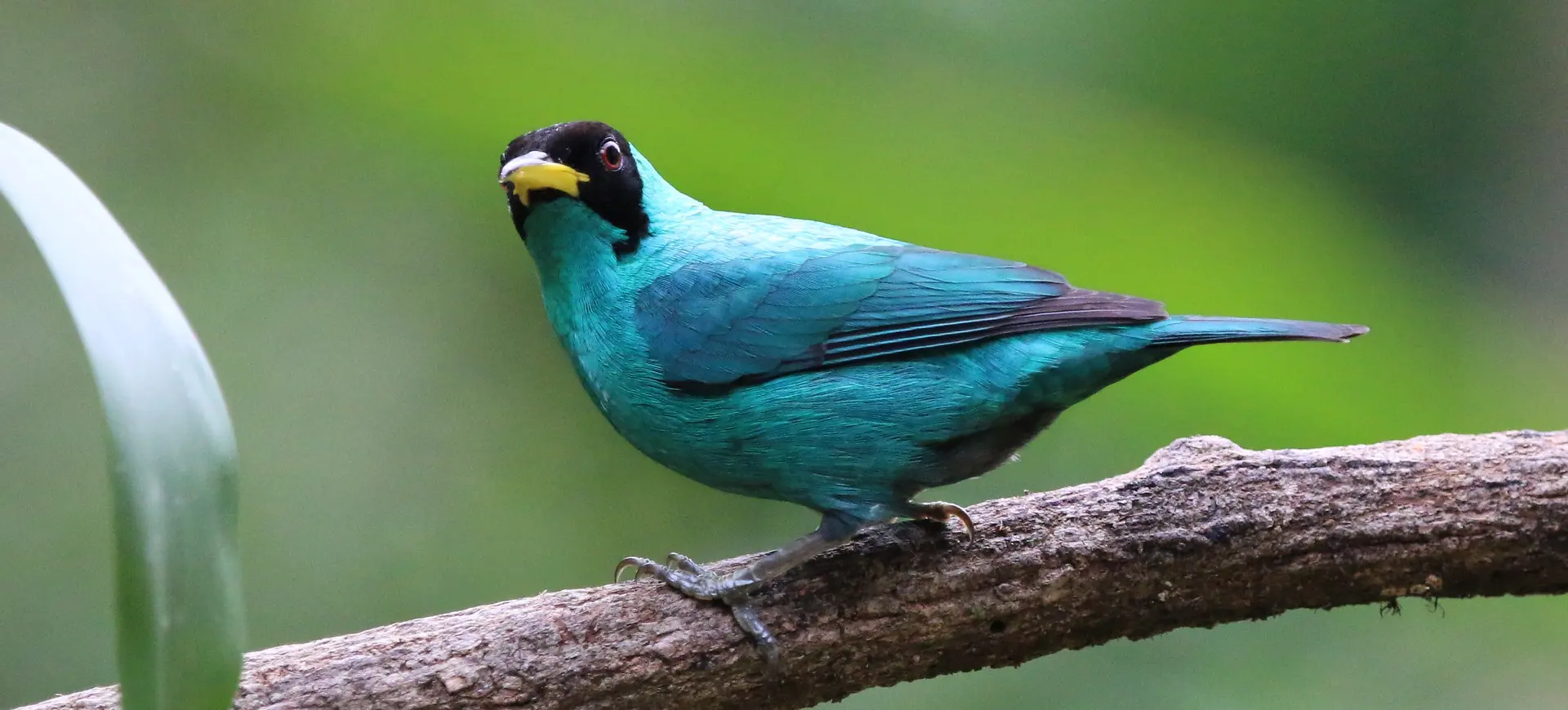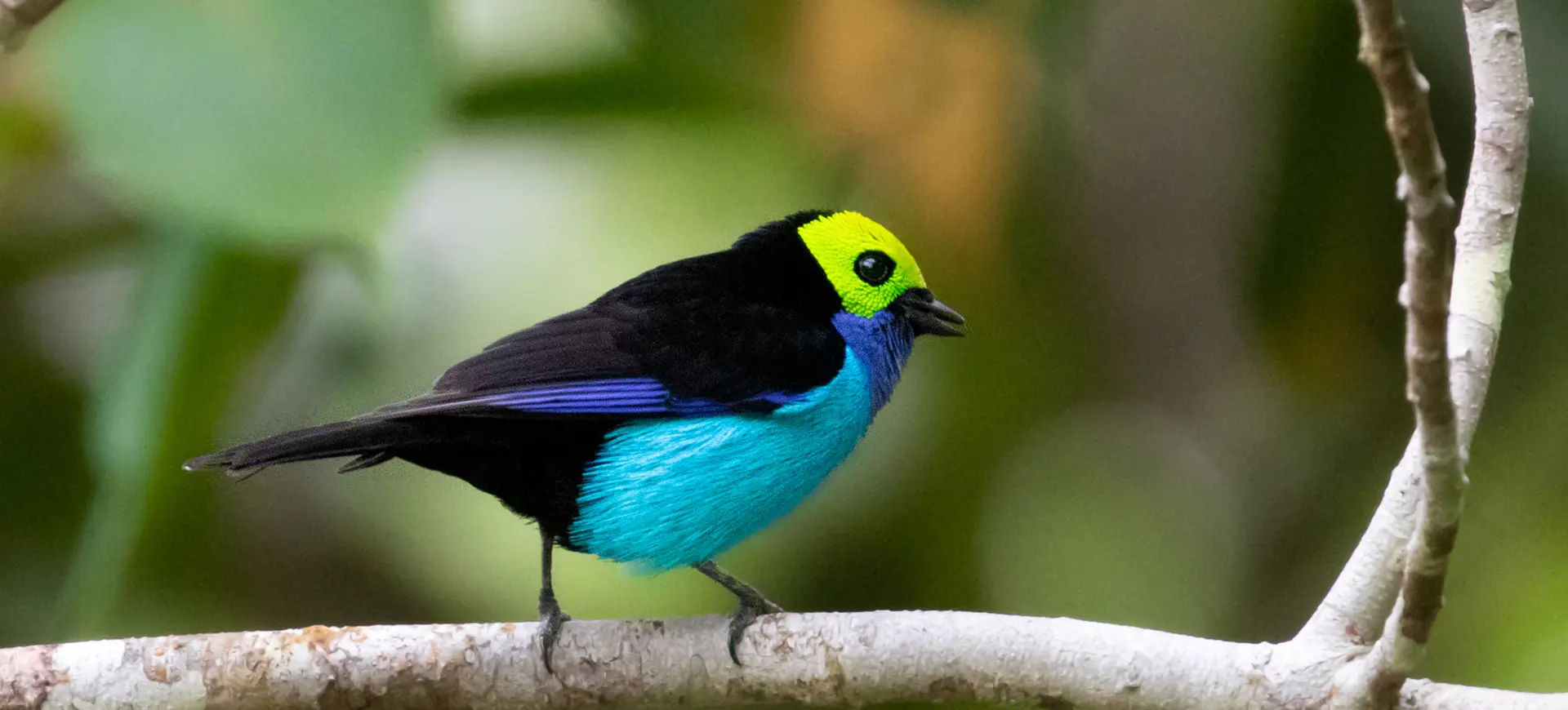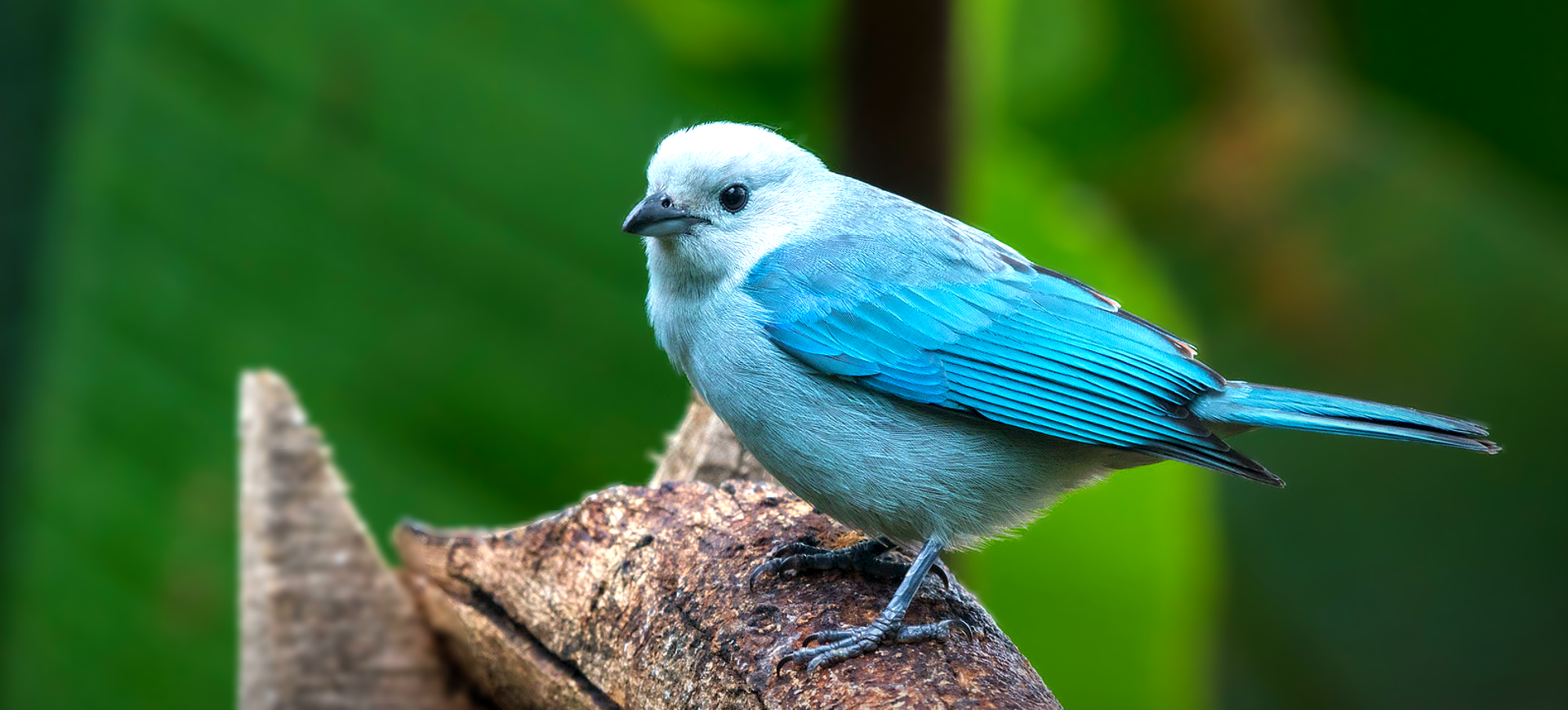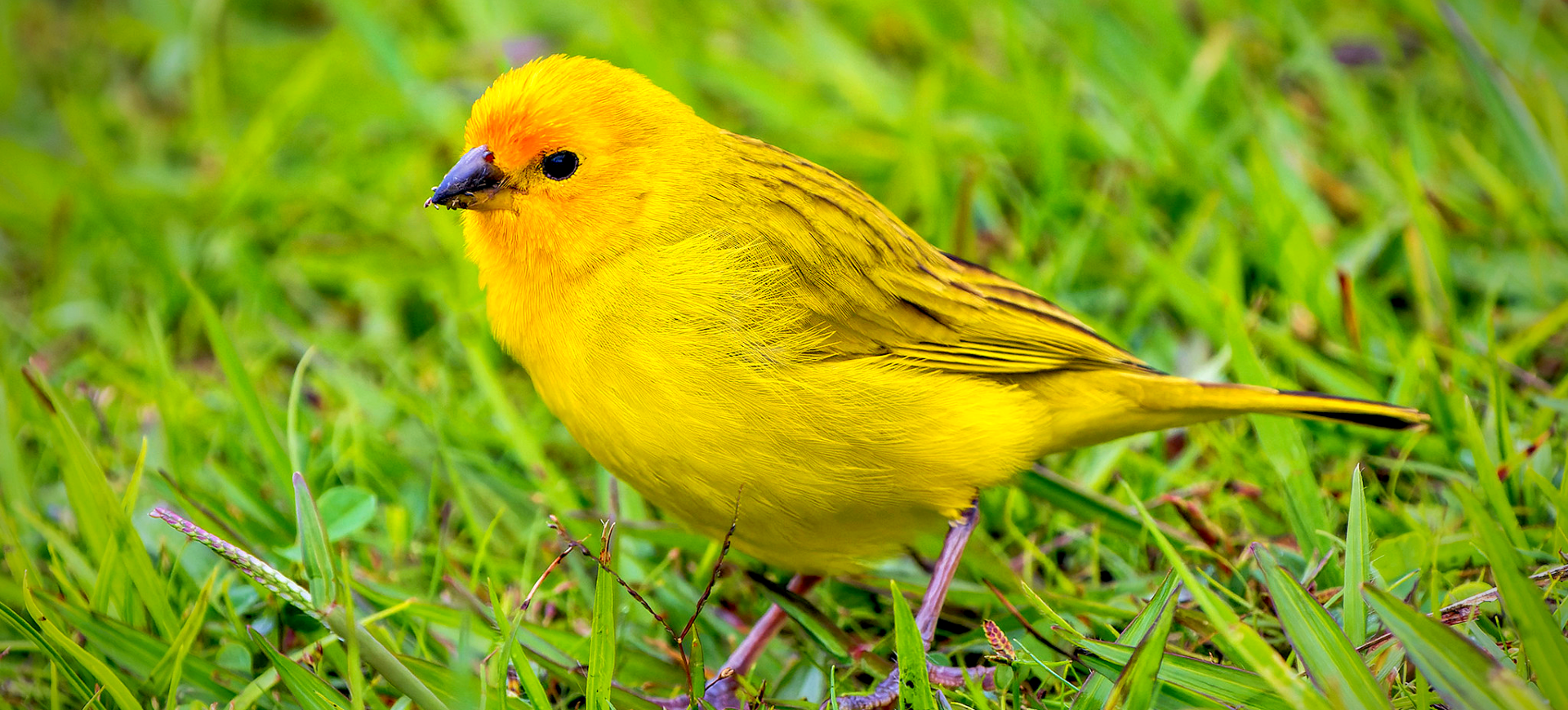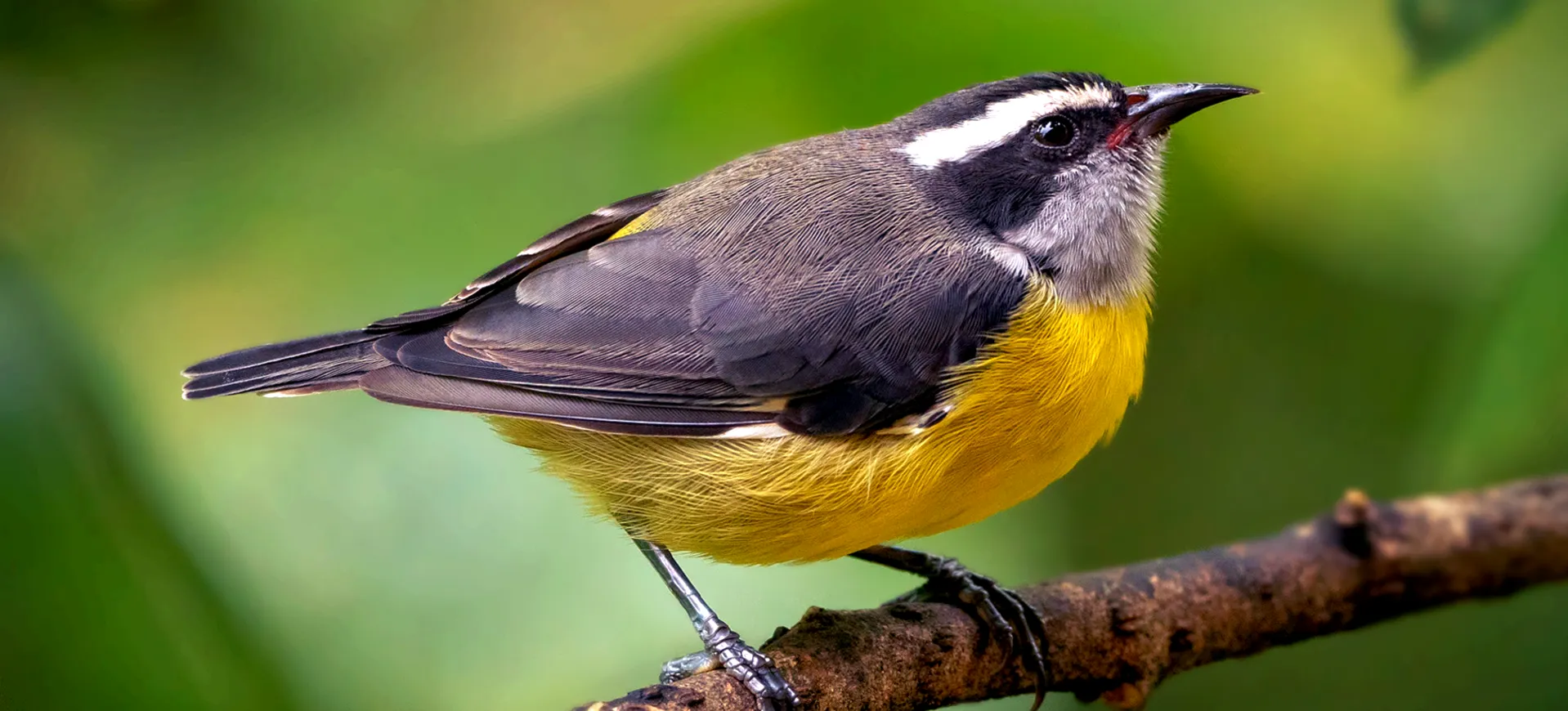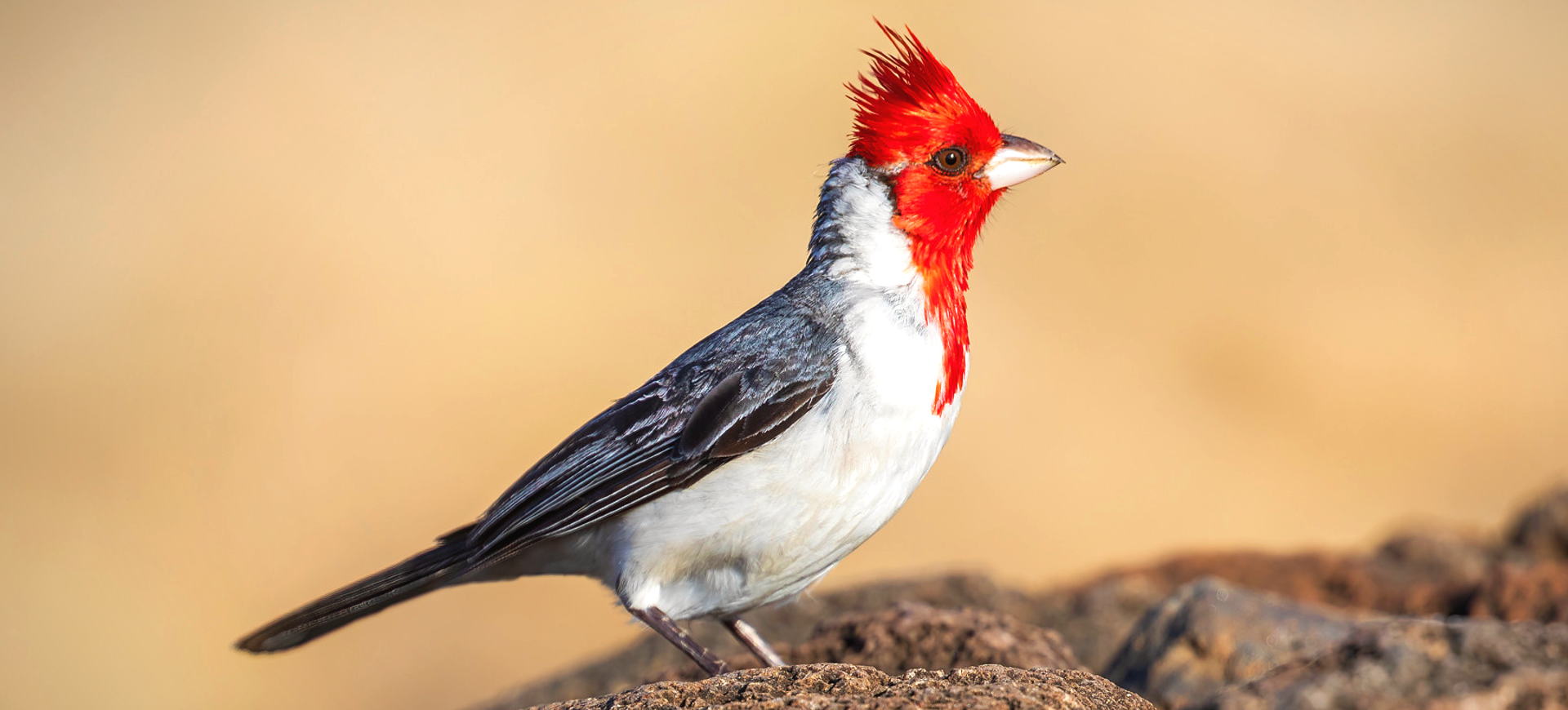Overview
The blue-necked tanager (Stilpnia cyanicollis) is a small, brightly colored songbird native to the tropical forests of South America. It is best known for its striking plumage, which features a vibrant blue head and neck, contrasting with a black body and greenish back. This species is primarily arboreal, often foraging in the canopy for fruits and insects while moving actively between branches. It is commonly found in mixed-species flocks, benefiting from increased foraging efficiency and protection from predators.
Highly social and vocal, the blue-necked tanager communicates through various high-pitched calls and songs. It plays a significant role in seed dispersal, aiding forest regeneration by consuming and spreading the seeds of various fruiting plants. Though often found in humid forests, it can adapt to secondary growth and disturbed habitats, allowing it to persist in human-altered landscapes. However, habitat loss due to deforestation remains a primary concern for long-term population stability.
This tanager exhibits slight variations in plumage depending on subspecies, particularly in the intensity of blue and green hues. It is generally non-migratory, maintaining a relatively stable home range throughout the year. Breeding pairs form monogamous bonds, with both parents sharing responsibilities in nest building and chick rearing. While not currently considered endangered, ongoing deforestation and habitat fragmentation could pose future threats to its populations.
Taxonomy
Kingdom
Phylum
Class
Order
Family
Genus
Species
Type
Current distribution:
The Blue-necked Tanager is widely distributed across northern and central South America, inhabiting various countries from Colombia and Venezuela to Peru, Bolivia, and Brazil. Their populations are generally stable in areas where extensive forests remain intact, showcasing their resilience to environmental changes. However, in regions where deforestation and habitat degradation have occurred, there may be localized declines, underscoring the importance of habitat conservation for their continued survival. Establishing protected areas and implementing sustainable land management practices are crucial for preserving the habitats of the Blue-necked Tanager and other forest-dwelling species.
Efforts to monitor and protect their populations are vital for understanding the impacts of environmental changes on their distribution and abundance. The Blue-necked Tanager's adaptability to various forested environments offers conservation opportunities within protected areas and human-modified landscapes. By maintaining connectivity between forest patches and reducing the impacts of habitat fragmentation, conservationists can help ensure the long-term viability of these vibrant birds. The widespread distribution of the Blue-necked Tanager reminds us of the importance of comprehensive conservation strategies that address the needs of wildlife across diverse habitats and geographical regions.
Physical Description:
The Blue-necked Tanager is distinguished by its splendid blue plumage, predominantly seen in males. Its brightness and hue vary, creating a mesmerizing display against the green backdrop of their forested habitats. While less striking, females possess a softer palette of blues and greens, providing camouflage among the leaves and branches. Both genders have robust bodies, short, stout beaks adapted for their frugivorous diet, and a medium-length tail that aids their agility and balance while navigating through dense foliage. Their physical attributes, including size and coloration, contribute to their aesthetic appeal and survival strategies, enabling them to forage efficiently and evade predators.
Their wings are designed for quick, short flights, allowing them to dart through the trees and bushes in search of food or escape from threats. The contrast between the males’ bright plumage and the females’ muted tones plays a crucial role in their mating rituals, attracting mates through visual cues. Despite their colorful appearance, Blue-necked Tanagers can be surprisingly elusive, often heard before they are seen, blending into their surroundings with an almost magical quality. Observing these birds in their natural habitat provides a unique glimpse into the diversity and complexity of avian life in South America, highlighting the intricate relationships between physical appearance, behavior, and ecosystem dynamics.

Lifespan: Wild: ~10 Years || Captivity: ~12 Years

Weight: Male & Female: 0.63-0.88 oz (18-25 g)

Length: Male & Female: 4.5-5.3 in (11-14 cm)

Wingspan: Male & Female: 6–7 in (15–18 cm)

Top Speed: Unknown
Characteristic:
Native Habitat:
The native habitat of the Blue-necked Tanager spans a vast expanse of South America, from the tropical lowlands of Venezuela to the cloud forests of the Andes, showcasing their adaptability to a wide range of environmental conditions. They are predominantly found in moist and humid forests, including primary and secondary-growth forests, benefiting from abundant fruiting trees and bushes. These birds are also common in forest edges, clearings, and areas with scattered trees, such as plantations and gardens, providing vital resources for survival. Their diverse habitats reflect their remarkable ecological flexibility, allowing them to thrive at various altitudes and in different forest structures.
Their ability to adapt to altered landscapes, including those impacted by human activity, highlights the potential for coexistence between Blue-necked Tanagers and humans, provided sufficient tracts of forested habitat are preserved. Despite this adaptability, the loss and fragmentation of their natural habitats pose significant challenges to their populations in certain regions. Protecting and restoring their habitats are essential for ensuring the sustainability of their populations, emphasizing the need for conservation efforts that prioritize the preservation of tropical and subtropical forests. The Blue-necked Tanager’s presence across such a broad geographical range is a testament to South America’s rich avian biodiversity and the importance of habitat conservation in maintaining this diversity.
Climate Zones:
Biomes:
Biogeographical Realms:
Continents:
Diet:
Diet & Feeding Habits:
Blue-necked Tanagers primarily sustain themselves on a diet rich in fruits, playing a critical role in the seed dispersal of numerous plant species within their rainforest homes. They adeptly maneuver through the canopy and understory, using their keen vision and graceful movements to pluck fruits from branches, contributing to the health and regeneration of their habitats. In addition to fruits, these tanagers occasionally supplement their diet with insects and nectar, showcasing their versatility and importance as pollinators in their ecosystems. This varied diet allows them to thrive across different environments and seasons, adjusting to the availability of food sources with remarkable resilience.
Their feeding behavior ensures their survival and fosters biodiversity, as the seeds they consume are dispersed throughout the forest, leading to the growth of new plants. The presence of Blue-necked Tanagers in agricultural areas and gardens, where they are drawn to fruiting trees, highlights their role in connecting natural and human-modified landscapes. By participating in the pollination of flowers and the control of insect populations, they contribute to the maintenance of healthy ecosystems, demonstrating the interconnectedness of avian species with their environment. Conservation of their habitats ensures these vital ecological processes continue, underscoring the importance of sustainable practices that benefit wildlife and human communities.
Mating Behavior:
Mating Description:
The Blue-necked Tanager exhibits a monogamous mating system, with pairs forming strong bonds for several breeding seasons. During the breeding season, males perform elaborate courtship displays, which include vibrant plumage displays and intricate songs to attract females. The female is responsible for building the nest, typically placed in the dense foliage of a tree or shrub, providing camouflage and protection from predators. Eggs are laid and incubated by the female, while the male provides food and protection for the nest.
The breeding season timing for the Blue-necked Tanager varies geographically, generally coinciding with the rainy season when food resources are most abundant. The nest is a cup-shaped structure made of plant fibers, mosses, and other materials, lined with softer materials for the eggs. Clutch size usually consists of two to three eggs, which are incubated for about 13 to 14 days before hatching. The young are altricial, requiring intensive care and feeding by both parents until they are ready to fledge and become independent.
Reproduction Season:
Birth Type:
Pregnancy Duration:
Female Name:
Male Name:
Baby Name:
Social Structure Description:
The Blue-necked Tanager exhibits a complex social structure characterized by forming pairs or small family groups throughout the year. These groups often join larger mixed-species flocks, particularly outside the breeding season, enhancing their foraging efficiency and providing increased protection against predators. Various vocalizations and behaviors are observed within these flocks, facilitating communication and strengthening social bonds among different species. This behavior underscores the importance of social interactions in survival and the intricate relationships within their ecosystems.
Moreover, the participation in mixed-species flocks highlights the Blue-necked Tanager’s role in the broader ecological community, emphasizing the interconnectedness of species within tropical and subtropical forests. These interactions are critical for the maintenance of biodiversity and the ecological health of their habitats. Preserving the complex social dynamics of species like the Blue-necked Tanager is vital in conservation efforts, reflecting the need to maintain the integrity and diversity of ecosystems. Conservationists can better protect these birds and their environment by understanding and supporting their social structures.
Groups:
Conservation Status:
Population Trend:
The Blue-necked Tanager, with a conservation status of Least Concern, demonstrates a broad distribution and stable population across its range. This status, however, belies the underlying threats of habitat destruction, deforestation, and environmental degradation that could impact future populations. Efforts to conserve their habitats, including creating protected areas, are crucial to survival. Additionally, continuous research and monitoring are vital for understanding their population dynamics and the effects of environmental changes.
Despite its resilience and adaptability, the Blue-necked Tanager’s existence is increasingly challenged by human activities threatening its natural habitats. Establishing protected areas and implementing conservation measures have been crucial in mitigating some of these threats. Ongoing studies aim to fill knowledge gaps about their ecology and population trends, providing a foundation for informed conservation strategies. Through such comprehensive approaches, the species can continue to thrive amidst changing environmental conditions.
Population Threats:
Habitat loss through deforestation, agricultural expansion, and urban development represents the primary threat to the Blue-necked Tanager, leading to significant habitat fragmentation. This fragmentation reduces the availability of critical nesting and foraging sites, directly impacting their survival. Furthermore, climate change introduces additional risks, potentially altering their habitat conditions and the availability of food resources. Addressing these threats requires a multifaceted approach, including sustainable land use practices, habitat restoration, and protecting critical areas to ensure long-term viability.
The cumulative effects of environmental changes and direct human impacts are significant barriers to conserving the Blue-necked Tanager. Conservation strategies must, therefore, prioritize the mitigation of habitat destruction and the effects of climate change. Sustainable practices and habitat conservation efforts are essential in preserving the ecological balance and ensuring the species’ future. Collaborative efforts between conservation organizations, governments, and local communities are key to successfully implementing these strategies.
Conservation Efforts:
Conservation initiatives targeting the Blue-necked Tanager have focused on habitat protection, creating biological corridors, and reforestation to maintain and restore forest connectivity. Protected areas have become sanctuaries for the species, preserving essential habitats and facilitating their natural behaviors. Environmental education and community involvement play crucial roles in raising awareness and fostering a culture of conservation. Targeted research into the species’ ecological needs and habitat requirements informs ongoing and future conservation actions, ensuring they are effective and sustainable.
The integration of community-led conservation programs has proven effective in engaging local populations in the stewardship of natural resources. Promoting the importance of biodiversity and ecosystem health contributes to a broader understanding of ecological conservation. The creation of habitat corridors and reforestation projects benefits the Blue-necked Tanager and supports a wide range of biodiversity within these ecosystems. Thus, conservation efforts for this species act as a catalyst for broader environmental preservation initiatives.
Additional Resources:
Fun Facts
- The Blue-necked Tanager’s vibrant plumage results from structural coloration, where the physical structure of the feathers reflects light to produce vivid colors.
- Thanks to a specialized metabolism, these tanagers can consume a wide variety of fruits, including those that are toxic to other animals.
- They play a crucial role in their ecosystems as pollinators and seed dispersers, aiding in the regeneration of forested areas.
- Blue-necked Tanagers are known for their adaptability. They thrive in primary and secondary forests and shaded coffee and cocoa plantations.
- Despite their small size, they have a strong territorial instinct, especially during the breeding season.
- The species is part of the Thraupidae family, one of the most diverse bird families in the world, with over 370 species.
- Blue-necked Tanagers have a high-pitched, musical call often heard before the bird is seen.
- They prefer foraging in the canopy and middle levels of the forest, rarely coming down to the ground.
- The species’ wide distribution and adaptability have allowed it to occupy various habitats across South America.
- Conservation efforts for the Blue-necked Tanager benefit the species and support the conservation of countless other species that share its habitat.


